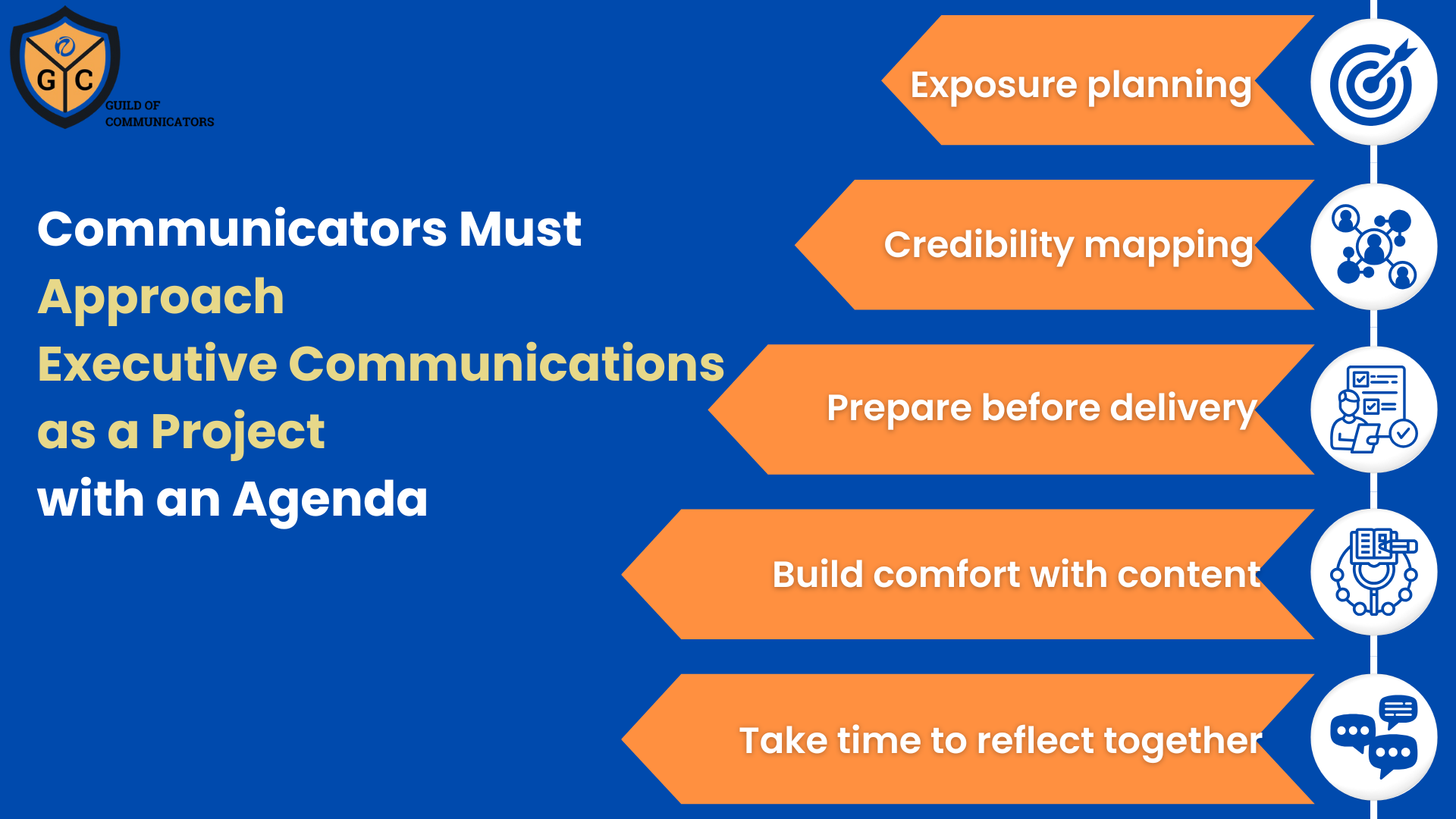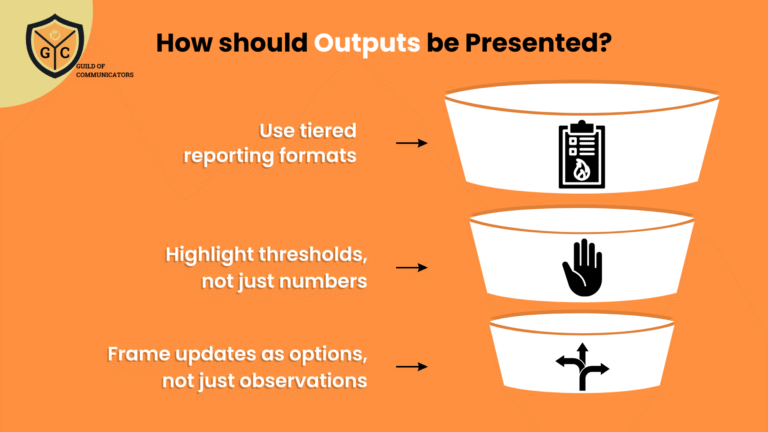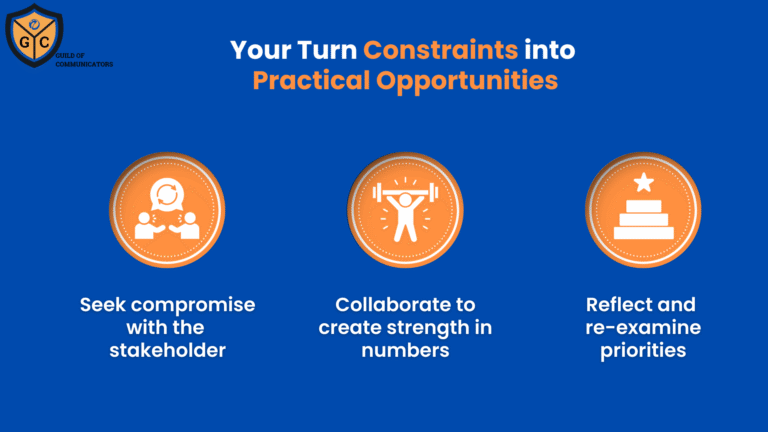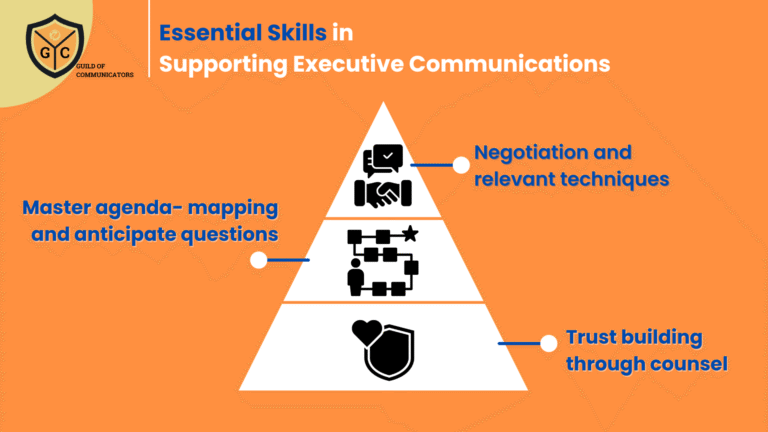Executives are expected to express their organisation’s value in ways that reflect a real understanding of their audiences’ concerns, expectations, and questions. That includes employees, customers, regulators, investors, and other publics. Doing this well takes more than just talking points; it requires a clear plan and deliberate effort from both the communicator and the executive.
For communicators, the challenge is often not about knowing what to say. It’s about how to help the executive show up consistently, confidently, and credibly. This means building a relationship based on trust, preparing content that supports two-way communication, and aligning on when, why, and how the executive should be involved. In many cases, this type of alignment is missing—not because communicators don’t care, but because the time and structure to do it well have not been prioritised.
For communications, it’s no longer enough to simply write key messages or manage interview logistics. We must play an active role in shaping how leadership is perceived, and that starts by managing upwards with purpose.
Understanding that Communication has Shifted From Broadcast to Dialogue
The nature of communication has changed. In the past, leaders mostly spoke through prepared statements, and audiences were expected to listen. Communication was one-way, often structured around announcements and planned press activity. That no longer reflects the current environment.
Now, communication is dynamic, audience-led, and takes place across multiple channels such as live events, internal platforms, social media, investor briefings, advisory panels, and more. Each audience engages on its own terms and expects leaders to do more than simply appear. They expect them to demonstrate understanding, invite dialogue, and reflect the values of the organisation in their words and behaviour.
This shift raises the bar for executive communication. Audiences want to know how decisions are made, how trade-offs are weighed, and how the organisation is adapting to changes in its environment. These are not simple updates, in the sense that they require reflection, clarity, and preparation.
Communicators play a key role in ensuring that leaders are not just visible but effective in what they say and how they say it.
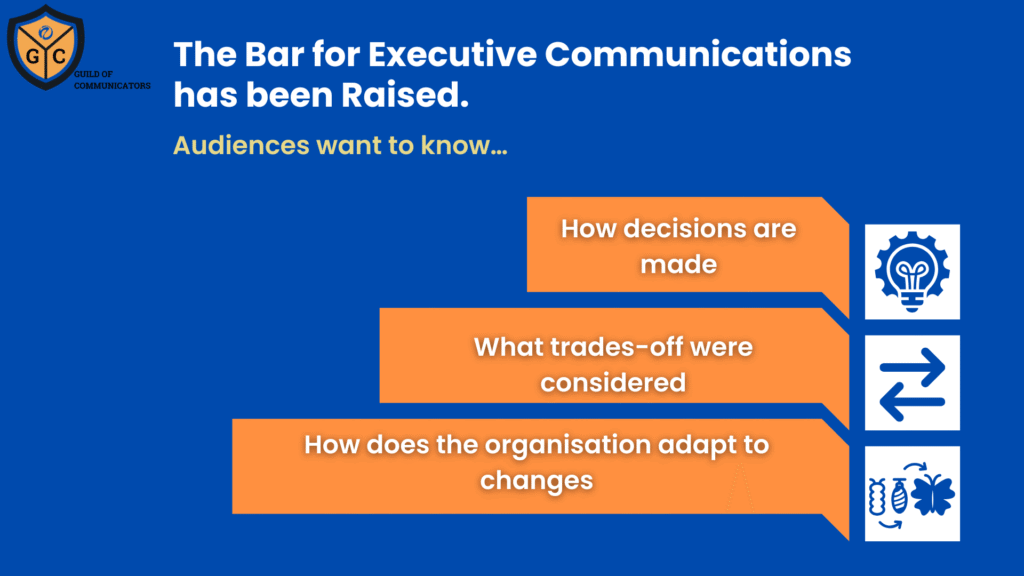
The Executive’s Reality is About Cognitive Load and Time Constraints
Executives are constantly under pressure. Between business performance, board expectations, operational issues, and people management, they operate in a state of near-constant cognitive overload. Their time is limited, their decisions carry weight, and their attention is often split across multiple priorities.
This affects how they receive information—and how they deliver it.
This fight-or-flight mindset is not ideal for high-quality communication. When a leader is rushed, distracted, or emotionally drained, even the most carefully crafted messages can fall flat. They may jump between topics, sound vague, or default to high-level talking points that don’t land with the audience. Worse, they may come across as dismissive or unprepared.
Communicators need to factor this in. It’s not enough to hand over a briefing note and hope for the best. Supporting an executive means recognising their limits, making space for preparation, and ensuring they understand what matters to the audience and not just what the business wants to say.
Bridging the Gap with Trust and Responsibility
A strong communicator–executive relationship is often assumed but rarely built with intention.
Many communicators know they should get to know their executive better, but hesitate due to hierarchy, limited access, or uncertainty about how to provide value. At the same time, executives may not see communication as a strategic function until something goes wrong.
This gap is a risk.
When trust is low or underdeveloped, communicators are treated as tactical support rather than strategic partners. As a result, preparation is rushed, messaging is inconsistent, and opportunities to engage meaningfully with audiences are missed.
Building a stronger relationship takes time, and it requires effort from both sides.
Communicators must show that they understand the business, not just the message. Executives must treat communication as a leadership responsibility, not a last-minute task. The result is more effective alignment, better audience outcomes, and fewer avoidable mistakes.
The Risk of Misalignment and How It Shows Up in Front of Audiences
When there is no communication plan, or when the executive is poorly briefed, it shows. The most common signs are vague responses, scattered messaging, or an over-reliance on surface-level language. This can make the executive appear unprepared or disconnected from the topic, even if that isn’t the case.
Audiences may interpret this as a lack of competence or interest. They may also assume the executive is being evasive or defensive—particularly if the tone is overly controlled or if follow-up questions are dismissed. In some cases, the executive may appear arrogant, especially if they default to talking at people rather than with them.
These outcomes are not just reputational issues—they affect how the organisation is perceived at a deeper level.
Consistent misalignment between leadership communication and audience expectations erodes trust over time. Communicators can prevent this by taking a more structured approach to how, when, and why executives engage.
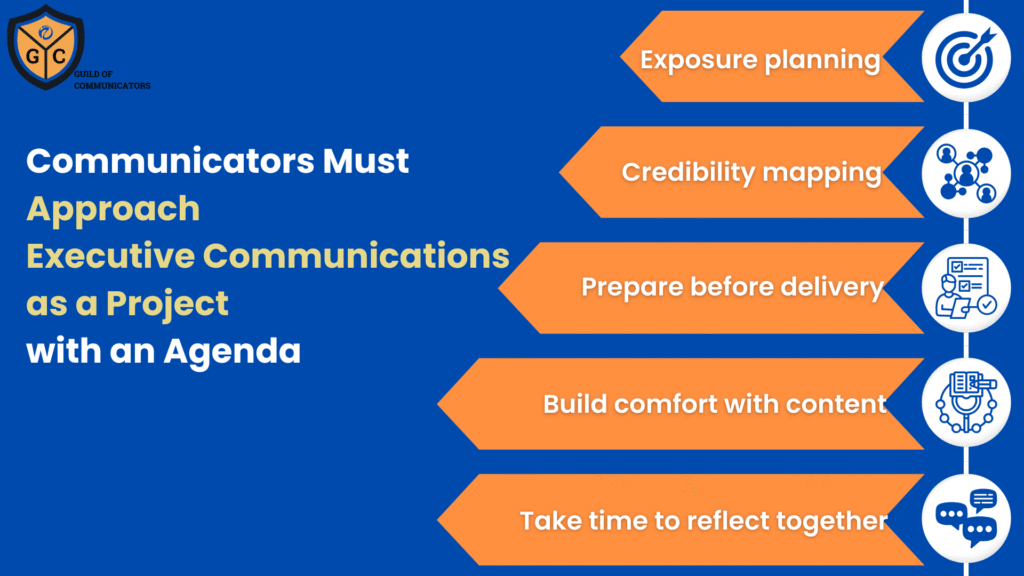
Managing Upwards: Five Practices for an Effective Communication Agenda
Managing an executive’s communication agenda is not about control. Rather, it’s about coordination. It means helping them show up in ways that support the organisation’s goals and meet audience expectations. For communicators, this is a strategic responsibility that requires structure, planning, and relationship-building.
To align and manage an executive effectively, communicators must approach the relationship as an ongoing project and not a set of isolated tasks. We can do so with a communication agenda. This tool helps clarify expectations, structure preparation, and ensure the executive is showing up in the right ways, at the right times, for the right reasons.
Here are five practical practices to adopt when putting together your communication agenda:
- Exposure Planning
Track how often the executive is being used for key topics. Repetition builds credibility, but overexposure can reduce impact. Ensure the executive is not overused for low-priority moments and underused when their presence could shift perception. - Credibility Mapping
Not every executive is the best person for every topic. Consider their background, interest, and proximity to the issue when assigning communication roles. Audiences notice when someone is speaking outside their depth—or when someone well-placed is noticeably absent. - Calendaring for Success
Build in time for preparation—not just the delivery. A well-briefed executive needs time to absorb, ask questions, and rehearse. Preparation should include reviewing audience context, anticipating tough questions, and adjusting tone and content accordingly. - Comfort and Familiarity Building
Include low-pressure opportunities for the executive to become familiar with new formats, topics, or audiences before public exposure. This might involve internal Q&As, informal leadership updates, or pre-briefings with audience representatives. - Feedback and Debrief Loops
After each engagement, take time to reflect. What worked? What didn’t? Were audience questions answered clearly? This not only improves future delivery but builds trust over time. Executives who see communication as a skill they can improve are more likely to invest in doing it well.
Communication will become more central to leadership. This is the reality. For both the business we serve and as communicators, we must better support our executives, strengthen the organisation’s credibility, and shape how it is understood in the moments that matter most.
*****
Ready to elevate your communications career? The Guild of Communicators is your essential hub for professional growth, offering a vibrant community and best-in-class resources.
- Connect Membership: Ideal for early-career communicators seeking a supportive peer network, over 300 foundational and intermediate courses, and monthly interactive group sessions.
- Elevate Membership: For ambitious professionals, this tier includes premium frameworks, immersive live online workshops, dedicated career coaching, and mentorship with senior industry leaders.
Discover your path to impact and accelerated career growth.
Join the Guild of Communicators today at www.gocommunicators.com.
(For students: If you’re a student, undergraduate or postgraduate, explore our special student referral programme to lock in your membership fee for the second year! Drop us an email to find out more)
——
Subscribe to join over 1500+ communicators and brands getting value every Tuesday while reading A Communicator’s Perspective, our weekly newsletter.

